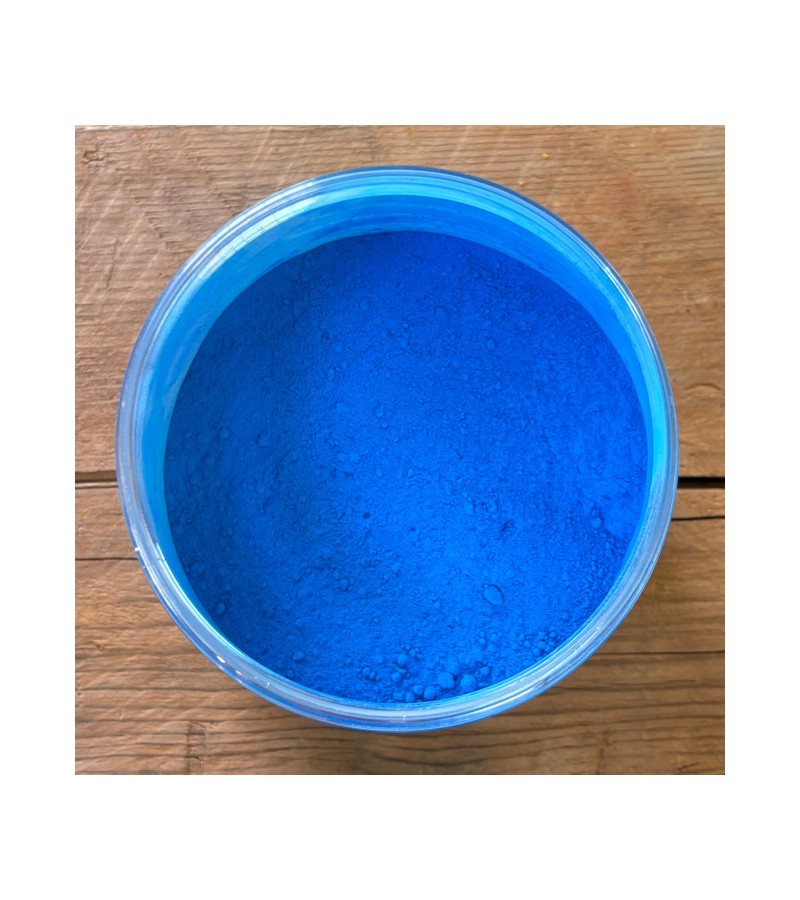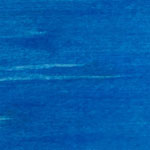




Bleu charrette is a pigment preparation created by Ocres de France in 2019.
This pigment is a synthetic pigment, without any danger for health or the environment. It is composed of 97% of natural ingredients.
![]()
Pigment made by Ocres de France
![]()

Legal notices

Delivery policy

Return policy

Google reviews
Uses : lime paint, lime coating, wax, paint, plaster, fresco, glaze, cement, fine arts.
This pigment is in powder. For use in artistic painting, it should be ground finely in a mortar before mixing it with the binder.

Bleu charrette mixed with linseed oil
Linseed oil : dissolve the powder in a little bit of turpentine before adding it to the linseed oil.
Water-based paint/fatty lime : dilute the pigment in some water to make it liquid before incorporating it into the paint.
Lime powder/cement/plaster : directly incorporate the pigment (up to 10% based on the weight of the binder), then mix in order to stain all of your binder.
Maximum dosage : The maximum dosage is 10% compared to the binder used. Above 10% it is recommended to incorporate fixators and adjuvant (lime use).
Results of Bleu charrette mixtures according to our packaging, in our limewash Badisof naturel
These renderings can be similar for any white base mixed with this pigment. However, differences could be possible depending on the binder used, the support and/or the application technique used, which will give a final color more or less light. The mixing possibilities are endless, while respecting the maximum dosage.
If you want to lighten a pigment, before coloring a transparent binder (linseed oil, wax, acryling binder, caparol, flour, etc), you can mix it with blanc Tiona (= white Tiona).
Color : sky blue slightly pulling toward gray mixed with a white binder.
This pigment is synthetic but composed of 97% of natural ingredients.
Made in France.
History : pigment created by Ocres de France in 2019. Who has never heard of the "bleu charrette" ? Behind this mystical name lies a simple explanation. Formerly cart drivers painted their carts with some prussian blue and baryta sulphate. This one had the particularity of repelling insects. Interesting, but if this formula is not great for small animals, is it safe for us? In our approach of "without danger / without polluting, we did not recover the recipe of our ancestors. Some people say with conviction that this beautiful painting was simply colored with pastel "Isatis Tinctoria". Perfect, this idea seduces us more, but will we know how to talk to plants, we, specialists in minerals ? And who cares ? We do not drive carts any more and nobody is likely to be pursued by a mosquito in need of blood, right ? In this case, here is our bleu charrette revisited, closer to its original color, or at least... It is believed.
_____________________
Our packaging :
We use recyclable PET jars, to throw away, cleaned, in the yellow bins ; and glass jar that you can clean and sterilize for other uses even for food storage.